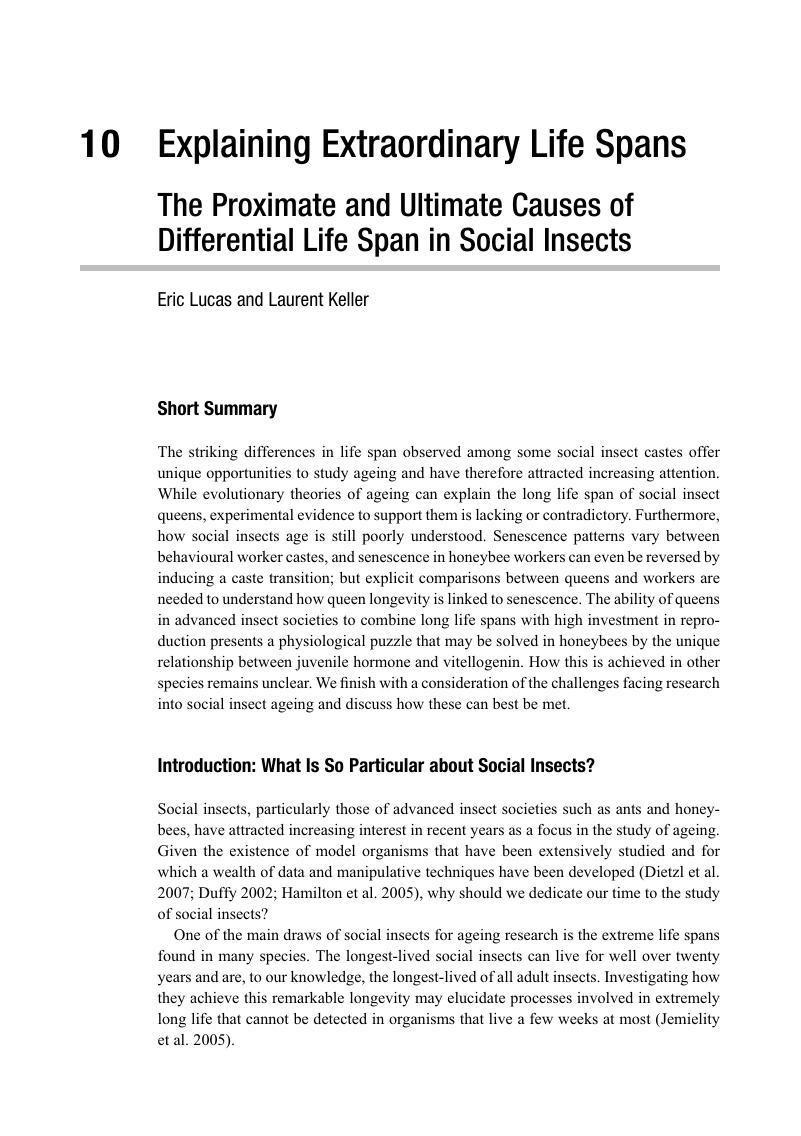Book contents
- The Evolution of Senescence in the Tree of Life
- The Evolution of Senescence in the Tree of Life
- Copyright page
- Dedication
- Contents
- Contributors
- Acknowledgements
- 1 Introduction: Wilting Leaves and Rotting Branches
- Part I Theory of Senescence
- Part II Senescence in Animals
- 6 Evolutionary Demography of the Human Mortality Profile
- 7 Senescence in Mammalian Life History Traits
- 8 Avian Escape Artists?
- 9 The Evolution of Senescence in Nature
- 10 Explaining Extraordinary Life Spans
- 11 Senescence in Modular Animals
- 12 Hydra
- Part III Senescence in Plants
- Part IV Senescence in Microbes
- Part V Senescence across the Tree of Life
- Index
- References
10 - Explaining Extraordinary Life Spans
The Proximate and Ultimate Causes of Differential Life Span in Social Insects
from Part II - Senescence in Animals
Published online by Cambridge University Press: 16 March 2017
- The Evolution of Senescence in the Tree of Life
- The Evolution of Senescence in the Tree of Life
- Copyright page
- Dedication
- Contents
- Contributors
- Acknowledgements
- 1 Introduction: Wilting Leaves and Rotting Branches
- Part I Theory of Senescence
- Part II Senescence in Animals
- 6 Evolutionary Demography of the Human Mortality Profile
- 7 Senescence in Mammalian Life History Traits
- 8 Avian Escape Artists?
- 9 The Evolution of Senescence in Nature
- 10 Explaining Extraordinary Life Spans
- 11 Senescence in Modular Animals
- 12 Hydra
- Part III Senescence in Plants
- Part IV Senescence in Microbes
- Part V Senescence across the Tree of Life
- Index
- References
Summary

- Type
- Chapter
- Information
- The Evolution of Senescence in the Tree of Life , pp. 198 - 219Publisher: Cambridge University PressPrint publication year: 2017
References
- 3
- Cited by

